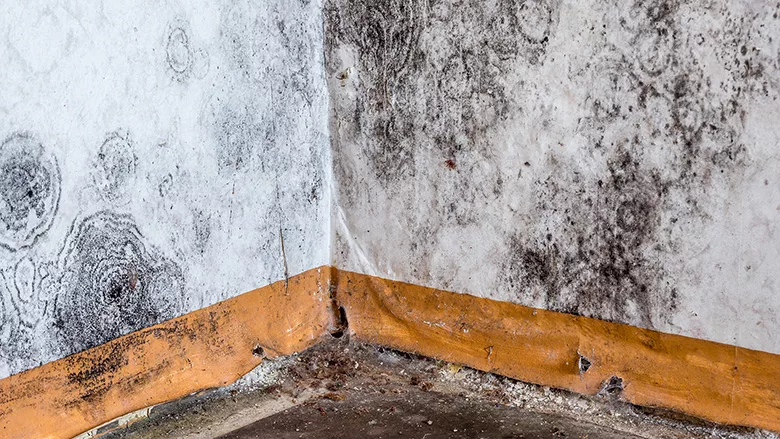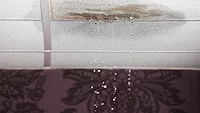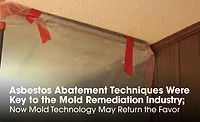Abatement Solutions in Mold Remediation

Photo credit: Animaflora / iStock / Getty Images Plus via Getty Images
As winter approaches and temperatures begin to drop near freezing in certain parts of the globe, there is a heightened risk for sudden, unpredictable weather. Cold temperatures, freezing rain and blizzards can result in costly property damage. Snowmelt can cause flooding, and freezing temperatures increase the risk of pipes and meters freezing and bursting, leading to flooding.
When flooding occurs, mold growth often happens during the gap of weeks or months to repair the water damage. Because mold can grow in as little as 24 to 72 hours after flooding, it’s nearly impossible to prevent. Luckily when proper mold remediation procedures are followed alongside the proper equipment and supplies, mold can effectively be remediated.
The Tools of Mold Remediation
When it comes to mold, there are many critical supplies and steps required to properly contain and remediate growth, and it’s very important to check on the regulations for the state you are in. Taught by various organizations, like IICRC, industry training and best practices often involve two key products: containment barriers and negative air machines.
Reusable hard sided containment barriers
During mold remediation, it’s important to contain the area to ensure other areas of the building are not affected by mold particulates in the air. To do so, remediation experts need to isolate the area from non-infected areas. This process involves closing off HVAC grills and sealing off cracks and crevices and setting up reusable, hard sided dust barrier walls around the area. Paired with air filtration devices, remediation experts have the ability to create a negative pressure environment within the contained area. Negative pressure will pull the contaminated air out of the area and capture the particulates with a HEPA filter.
While these walls are the most effective, it hasn’t always been a common way to get the job done. Previously, remediation experts and contractors relied on one-time-use materials like drywall and plastic sheeting to get the job done. Today, these reusable hard sided containment walls available on the market are easy to use and quick to set up. With a flexible design, these walls can be configured to match the exact measurements needed to get the job done. And most importantly, before the use of air scrubbers or negative air machines, you must contain contaminated areas before any remediation can start.
Portable HEPA filtration system
Portable air scrubbers (negative air machines), are used in conjunction with containment using ducting to remove contaminated air from a sealed containment area. The filtered air is exhausted outside of the containment. This creates negative air pressure (a slight vacuum effect) inside the containment relative to surrounding areas. Air scrubbers help limit the spread of contaminants to other areas inside the structure.
These machines are portable filtration systems that draw air from the surrounding environment and pass the air through a series of filters to remove particulates, like mold spores, from the air. There are several varieties of air filtration devices available on the market today, but it’s important to know which device is the most effective option.
A true HEPA filter can capture 99.97% of 0.3-micron particulates, including mold spores, dust, and other allergens, and an even higher percentage of larger particles.
These units are equipped with true HEPA filters which is a must. HEPA, an acronym for “High Efficiency Particulate Air” refers to a filter that is manufactured, tested, certified, and labeled in accordance with current HEPA filter standards. There are several subclasses within the HEPA classification. A true HEPA filter can capture 99.97% of 0.3-micron particulates, including mold spores, dust, and other allergens, and an even higher percentage of larger particles.
Upon completion of the mold abatement, ensure the cause of the mold growth has been identified and an action plan has been initiated to prevent further mold growth. This action plan should include mitigating the original cause of the mold contamination. This would take into account such factors as past flooding, moisture intrusion or elevated levels of relative humidity. Also, at completion of mold abatement, check that the remaining finishes (e.g., concrete, wood framing, sub-floors) have been adequately dried so that mold growth will not re-occur when new finishes are installed. The work area may require further drying efforts before re-construction can commence.
Combine the Right Tools With the Necessary Expertise
In order to safely and effectively remediate mold, it’s essential to find not only the right solutions, but also the right equipment provider. You want to work with a company that has many years of experience in the industry, excellent support, and state-of-the-art solutions. By utilizing essential equipment, like air scrubbers and hard sided dust barrier containment walls, remediation and abatement experts can properly get the job done as safely and efficiently as possible, without being exposed to harmful air.
Looking for a reprint of this article?
From high-res PDFs to custom plaques, order your copy today!






